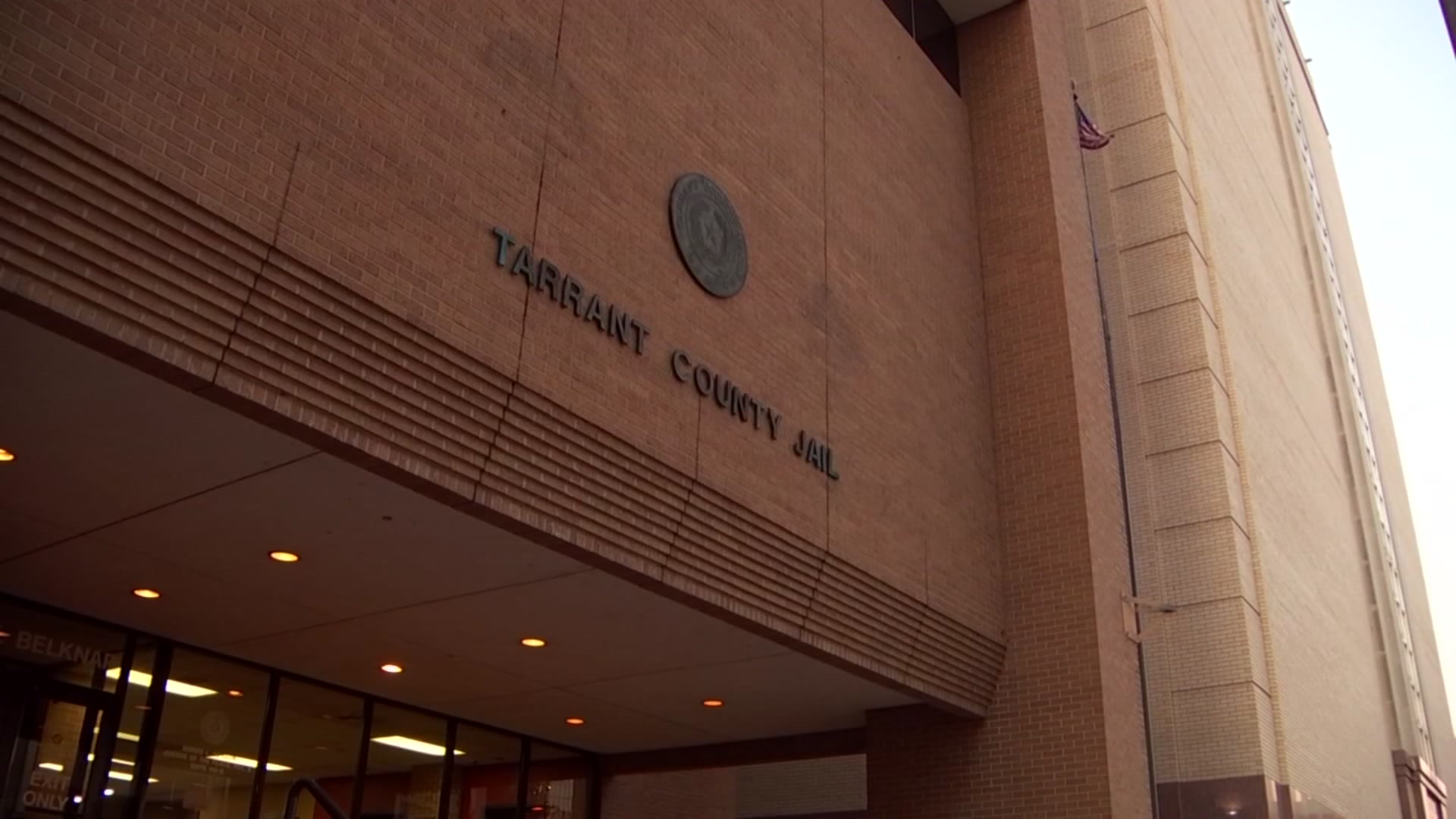There is so much stacked up against parents right now when it comes to food insecurity.
But there’s concern the situation could get worse in the coming months.
President Joe Biden recently announced that February will be the last payout of COVID-19 emergency allotments for the Supplemental Nutrition Assistance Program, or SNAP. It's just one of many pandemic relief programs that have hit their end mark after three years.
On top of that, Congress ended "free lunch for all" pandemic exemptions last June, which sent families back to filling out paperwork and meet criteria to qualify. Many families have fallen through the cracks across the country, leading to a rise in school lunch debt. Some lunch debts total in the thousands locally.
Get DFW local news, weather forecasts and entertainment stories to your inbox. Sign up for NBC DFW newsletters.
Additionally, just as many of the programs that were put into place to help the community during the pandemic come to an end, the nation is facing the inflation rates not seen in 40 years.
"We know that a nourished child is a learning child. And when you take that nourishment nutrition away from kids, they're going to have a tougher time in school,” said Val Hawthorne, Director of Government Relations for North Texas Food Bank, which is preparing to fill huge gaps as programs end and inflation tightens budgets for families even more into the new year.
FILLING THE GAPS
Local
The latest news from around North Texas.
Administered by Texas Health and Human Services Commission (HHSC), SNAP is a federal program that provides food assistance to eligible low-income families and individuals in Texas.
Congress recently passed legislation to establish February 2023 as the last month eligible households can receive emergency SNAP benefits, which have totaled more than $9.3 billion to Texans since April 2020. Due to this federal legislation, recipients will no longer receive additional benefits and this benefit change cannot be appealed, according to Gov. Greg Abbott. SNAP households will receive a notice about the change this month before the emergency allotment ends.
The North Texas Food Bank is bracing for families to see a minimum loss of nearly $100 or more to their benefits. In the DFW area, that amounts to about $70 million each month that families will no longer get for food, according to NTFB.
"So they're having to make some tough choices between things like food, as well as paying their rent, paying for medical expenses, paying for kids clothes, all those necessities in life,” said Anne Readhimer, Vice President of Community Impact for NTFB. "It's especially during those developmental years, having the proper nutrition helps with their growth, it helps with their brain development, helps with their performance in school -- which are all foundational to being a successful adult."
Luckily, the food bank, in addition to other state/federal programs can help fill the gaps. The Community Eligibility Provision (CEP) allows the nation’s highest poverty schools and districts to serve breakfast and lunch at no cost to all enrolled students without collecting household applications.
Instead, schools that adopt CEP are reimbursed using a formula based on the percentage of students categorically eligible for free meals based on their participation in other specific means-tested programs, such as SNAP.
Looking through the list, many North Texas school districts like Dallas, Fort Worth, Mesquite, Arlington, Garland and Irving have schools have applied for and qualified for it – although not every school is granted eligibility in some districts.
The free school meals also don’t account for meals at home and on the weekends, leaving many families falling through the cracks. That’s where school pantries and partner agencies with food banks have to step in.
“We've seen a 15% increase since March of '21 in our demand, so we know that there is a lot of need out there in the North Texas community," said Readhimer.
The food bank went from providing an average of over 10 million meals a month during the pandemic to over 12 million meals since March of 2021.
The North Texas region – with the service areas of NTFB and Tarrant Area Food Bank combined – ranks 3rd in the country for the level of food insecure children, behind New York and Los Angeles. Overall, nearly 700,000 North Texans are unsure of where their next meal will come from, including more than 250,000 children.
NTFB also offers assistance to help enroll families SNAP benefits so they overcome barriers to participation.
"We know that families are struggling with inflation, gas prices and food prices and everything else that seems to have gone way up. And what we really want to do is connect families with services that they may qualify for, for example, they may be eligible for SNAP. So we encourage them to reach out and see if they can get that benefit to their families so they can purchase food at their local grocery store, purchase the food that they like, and then bring it to themselves," said Hawthorne. "We serve as a connection point for a lot of our community members that are struggling financially or just getting food inside the home."
The need for food assistance is greater today than it was at the height of the pandemic. The numbers paint the picture:
- North Texans are spending $325 more each month on food today than they did this time last year.
- Food costs are up 11.2% year on year
- Rent is up 7.2%
- Health insurance is up a record 28.2%
- Utility rates have risen and natural gas prices have gone up with increased demand during winter
Last year, the North Texas Food Bank worked in partnership with more than 400 partner agencies and organizations from the NTFB Feeding Network to provide access to more than 136 million nutritious meals across a 13-county service area – the most annual meals ever in the food bank’s history.
SCHOOLS STEPPING UP
Some teachers and schools are taking matters into their own hands to make sure not a single child goes hungry.
Kat Bearden, a history teacher and PTA president at Webb Middle School in Garland ISD, shared her experience she had during the pandemic with a student who was having behavioral issues at school.
"I kind of pulled him to the side and was like, ‘hey what's going on?’ And he ended up telling me that his father was having to sell scrap metal to make ends meet,” she said. "How are children expected to do assignments and turn in homework and be still when their stomachs are growling and they're hungry? And they got a lot going on?"
Much of the student population at her school comes from families who are struggling financially.
For that reason, her school does qualify for a Community Eligibility Provision – a program offered through the Texas Department of Agriculture – which offers free automatic free breakfast and lunch on a four year cycle.
But not every school in Garland got that qualification. It also doesn’t account for meals on school nights or the weekend.
Bearden said she knew she had to do something to help, especially with inflation gripping family budgets this past year.
"I feel like it's a hard situation for a lot of families,” she said. “You're having to figure out what bill to pay. You have to make sure that your kids are fed, so other things might go unmet.”
Bearden turned to North Texas Food Bank for help. They helped her start a food backpack program and eventually a monthly meal box distribution with enough produce, dry goods, milk and shelf stable food to last families up to a month.
She said she's thankful to work in a school where she feels supported in any effort to help her students.
"I feel blessed. Our principal, Dr. Niketta Wilson, guided me in the right direction so we could reach out to North Texas Food Bank and get that pantry started,” she said. "So just having the support for her to trust us as educators to be able to see the need and then feed the need."
Now, the distribution will be even more crucial for families who are affected by the SNAP benefits rolling back by the end of next month.
"You're not alone. There's many families that are needing extra assistance right now. Reach out to your schools, reach out to me – Kbearden@garlandisd.net. I can point you in the right direction,” she said.
That's a key message – Bearden said she hopes to inspire other educators and even parents to take action and reach out to local resources like food banks, churches or nonprofits.
The food distribution at her school serves not only her students but is open to all families in the district who can come out and need help. The distribution takes place on the first Wednesday of every month around 4 p.m. at Webb Middle School in Garland.
"The main message is that hunger is unacceptable," said Hawthorne. "We have so many resources, particularly in North Texas, that can help families that are in need. And we just need to be able to connect families to those services so that they can get the help that they need."
If you would like to volunteer your time or donate to a food bank, click here for more information about getting involved with North Texas Food Bank and click here to get involved with Tarrant Area Food Bank.
If you are in crisis, click the following links for information to each agency’s resource page.



